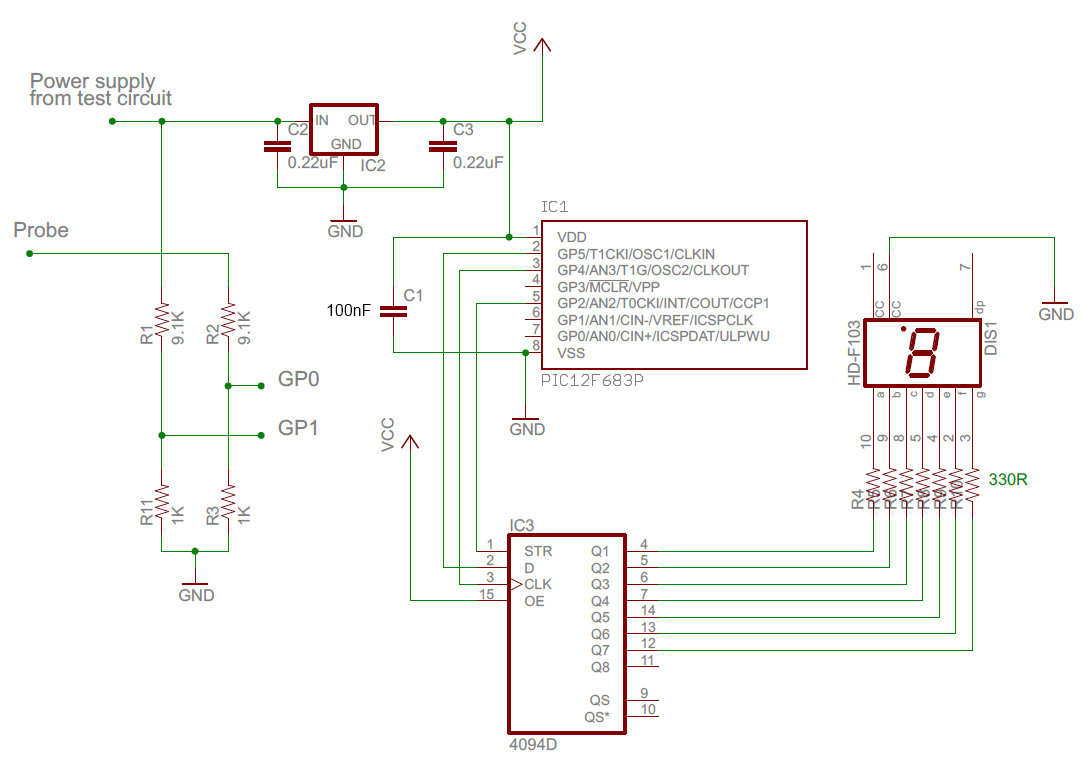Spectacular Tips About How To Test A Logic Circuit

Decoding the Secrets
1. Why Bother Testing, Anyway?
Ever built something, only to have it not work? Yeah, me too. That's where understanding how to test a logic circuit comes in handy. Think of it as debugging for hardware. Instead of staring blankly at lines of code, you're chasing electrons through tiny gates. The goal? To ensure everything is behaving as expected, kind of like making sure your pet hamster is actually running on his wheel and not just napping in the corner (again!). Without proper testing, youre basically setting yourself up for frustration and wasted time. Youre also potentially risking damage to other components if a faulty circuit is allowed to run rampant.
Testing isnt just about finding faults after the fact; it's also about preventative maintenance. By regularly checking your logic circuits, you can identify potential issues before they snowball into major problems. This is especially important in critical applications where failure is not an option, like in medical devices or aerospace systems. Imagine a planes autopilot failing mid-flight because someone skipped the circuit tests! Okay, maybe thats a bit dramatic, but you get the point.
Ultimately, learning to test a logic circuit is about gaining confidence in your designs. Its about knowing that your creation will perform reliably and consistently. It's also about saving you time, money, and a whole lot of headaches in the long run. So, buckle up, because we're about to dive into the electrifying world of logic circuit testing!
Plus, let's be honest, there's something incredibly satisfying about pinpointing a faulty component and fixing it. Its like being a detective, piecing together clues to solve a mysterious case of the missing voltage. And who doesnt love feeling like a super-sleuth?

The Basic Toolkit
2. Gathering Your Gear
Alright, before we start poking around with probes and wires, lets talk tools. You wouldn't attempt to build a house without a hammer and nails, right? Same goes for circuit testing. The bare minimum you'll need is a multimeter. This handy device can measure voltage, current, and resistance, giving you vital clues about whats happening (or not happening) in your circuit. Make sure you know how to use it properly! There are tons of tutorials online, and trust me, it's worth the time investment.
Next up is a logic probe. This is like a simpler version of a multimeter, specifically designed for logic circuits. It quickly indicates whether a point in the circuit is high (1), low (0), or floating. It's faster and often more convenient than a multimeter for basic logic level checks. It's like having a shortcut button for "Is this working?" which is a question we all ask way too often.
Beyond these essentials, consider investing in a breadboard and jumper wires. These make it easy to build and test simple circuits without soldering. Theyre also incredibly useful for prototyping and experimenting with different logic gate configurations. It's like a playground for electronics! You can try things out without committing to a permanent setup.
Finally, don't forget your trusty datasheet! This document contains all the technical specifications for your logic chips, including voltage requirements, pinouts, and truth tables. Knowing this information is crucial for understanding how the circuit is supposed to behave and diagnosing any problems. Treat your datasheet like a sacred text; it holds the secrets to your circuit's success.

The Testing Process
3. A Methodical Approach to Success
Okay, you've got your tools, you've got your circuit, now it's time to get down to business. The first step is always visual inspection. Seriously, just look at the circuit! Are there any obvious signs of damage, like burnt components, broken wires, or loose connections? Sometimes the problem is staring you right in the face. It's like when you're searching for your keys and they're on your head. Embarrassing, but easily solved.
Next, power up the circuit and use your multimeter to check the power supply voltage. Is it within the specified range for your logic chips? Too high or too low voltage can cause all sorts of problems. Think of it like trying to run your car on the wrong type of fuel. It might start, but it definitely won't run smoothly. Use your datasheet to confirm the proper voltage for each IC, most are 3.3v or 5v.
Once you've confirmed the power supply is good, it's time to start checking the logic levels at various points in the circuit. Use your logic probe or multimeter to verify that the inputs and outputs of each logic gate are behaving as expected based on the truth table. For example, if you have an AND gate with both inputs high, the output should also be high. If not, you've found a problem! This can be tedious, but it's a necessary step in isolating the fault.
If you're working with a more complex circuit, consider using a signal generator to inject test signals. This allows you to simulate different input conditions and observe the circuit's response. This is particularly useful for testing sequential logic circuits like counters and shift registers. Its like giving your circuit a workout to see how well it performs under pressure.

Common Problems and Solutions
4. Troubleshooting Like a Pro
Even with the best tools and a meticulous approach, things can still go wrong. One common problem is incorrect wiring. Double-check your connections to ensure everything is wired according to the schematic. A single misplaced wire can wreak havoc on the entire circuit. Its like accidentally swapping the red and blue wires when connecting a speaker the sound might be interesting, but definitely not what you intended.
Another frequent culprit is faulty components. Resistors can drift out of tolerance, capacitors can dry out, and chips can simply fail. Use your multimeter to check the values of resistors and capacitors. For chips, the process is a bit more involved, often requiring you to replace the suspect component and see if the problem goes away. It's like swapping out a bad lightbulb to see if the lamp works again.
Sometimes, the problem isn't a hardware fault, but a design flaw. The circuit might not be behaving as you expected because you made a mistake in the logic design. Review your design carefully and consider simulating it using software tools like Logisim or CircuitJS to identify any logical errors. These tools can help you catch mistakes before you even build the circuit.
Finally, don't underestimate the power of a fresh pair of eyes. If you've been staring at the circuit for hours, it's easy to miss something obvious. Ask a friend or colleague to take a look. They might spot a simple mistake that you've overlooked. Sometimes, all it takes is a different perspective to solve the puzzle. It's like trying to find a hidden object in a picture a fresh set of eyes can often see what you've been missing all along.

Advanced Techniques and Tools
5. Leveling Up Your Testing Game
Once you've mastered the basics, you can start exploring more advanced testing techniques. One such technique is boundary scan testing, also known as JTAG. This allows you to test the connections between integrated circuits without physically probing the pins. It's especially useful for testing densely packed circuit boards where access to individual pins is difficult. Think of it as a secret backdoor into your circuit, allowing you to peek at what's going on without disturbing anything.
Another powerful tool is a logic analyzer. This is like a supercharged multimeter that can capture and display multiple signals simultaneously. It allows you to see the timing relationships between different signals, which is crucial for debugging complex digital circuits. It's like having a high-speed camera that can capture every detail of the circuit's operation.
For high-speed circuits, you might need to use specialized equipment like oscilloscopes and spectrum analyzers. These tools allow you to analyze the frequency content of signals and identify signal integrity issues. It's like having a microscope that can zoom in on the tiniest details of the signal waveform.
Finally, consider using automated test equipment (ATE). These systems can automatically test circuits against a predefined set of criteria, speeding up the testing process and ensuring consistency. This is particularly useful for high-volume production environments. It's like having a robot that can test circuits all day long, freeing up your time for more creative tasks.

BOOLEAN LOGIC CIRCUITS 50 Mark Quiz/Test Teaching Resources
Frequently Asked Questions (FAQ)
6. Your Burning Questions Answered
Q: What's the most common mistake people make when testing logic circuits?A: Forgetting to check the power supply! Seriously, ensure you have the correct voltage and polarity before anything else. It's like forgetting to put gas in your car — you won't get very far.
Q: Can I test a logic circuit without any specialized tools?A: Yes, you can start with just a multimeter! While a logic probe and other fancy gadgets make things easier, a multimeter can measure voltage and continuity, giving you a basic understanding of whats happening in the circuit.
Q: How do I know if a logic chip is faulty?A: The most reliable way is to swap it out with a known good chip. If the problem disappears, the original chip was likely the culprit. It's like replacing a suspect ingredient in a recipe — if the dish suddenly tastes better, you've found the problem.